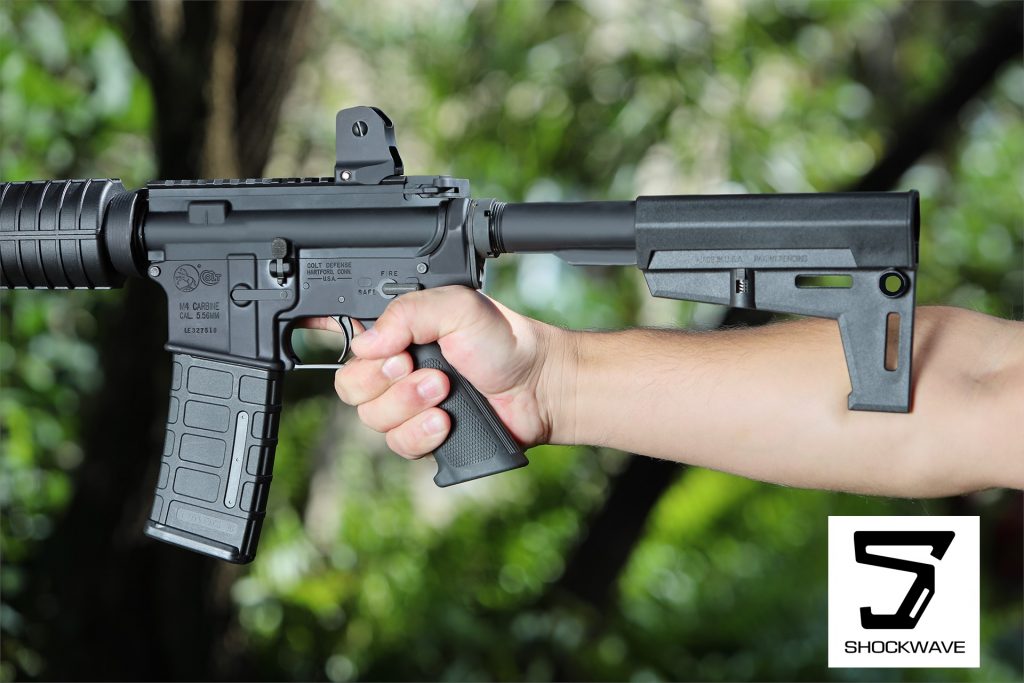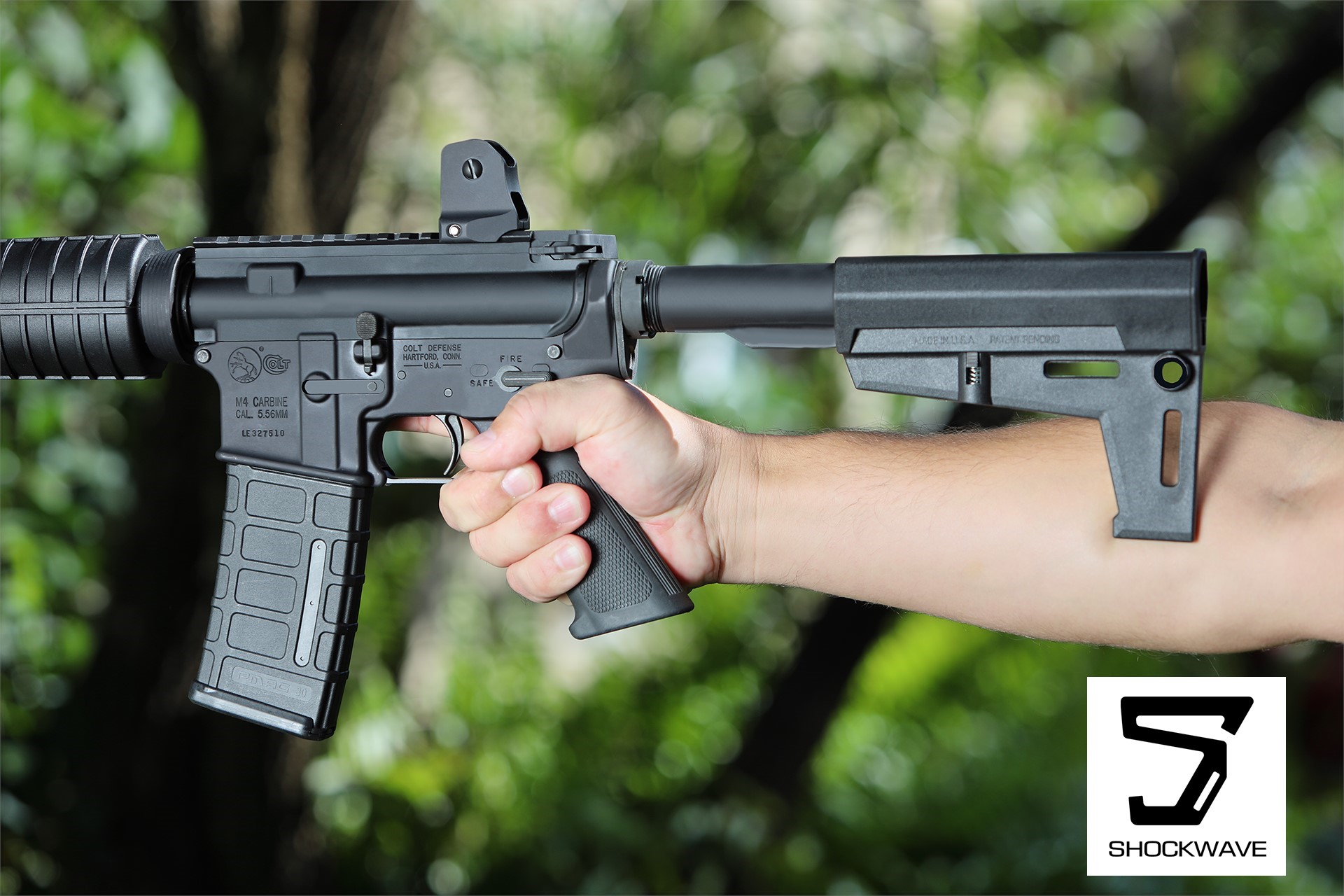Disclaimer: This blog is for educational purposes only and not intended to provide legal advice. You are responsible for your own actions, and we advise you to seek guidance from a legal professional in your area before building a custom AR-15 pistol.
Should you be afraid to build your own AR pistol?
Lions, tigers, and custom-built AR pistols. Oh my!
As a law-abiding citizen, we understand that building your own AR pistol can feel like walking on eggshells. It’s one thing to learn how to safely make a firearm that will work great for your needs—and quite another when it comes to building it according to all the convoluted rules in place.
Have no fear. We will walk you through the steps of what you need to get started.
What you need to know before building an AR-15 pistol
The fears behind building a custom AR-15 pistol are not primarily focused on preventing yourself from getting caught in the act of using an illegally configured firearm at the range—but more about protecting yourself in case you ever need to use it in a personal defense situation, where your firearm can be seized and used as evidence against you in court.
For rest assurance (and to remain the law-abiding citizen we know you are), building a firearm legally is truly a “cover your ass” action that calls for getting it done right the first time. It’s not worth cutting corners that could cost you a whole lot of issues in unexpected circumstances.
Before we get into the nitty gritty, let’s cover our bases.
The first thing you want to do is familiarize yourself with both your local and state gun regulations, or contact your local FFL dealer for guidance. They can help answer questions and provide suggestions as well.
Now let’s define what a pistol is on a federal level.
The Bureau of Alcohol, Tobacco, Firearms and Explosives (ATF) defines a pistol as “a weapon originally designed, made and intended to fire a projectile from one or more barrels when held in one hand and having: a chamber as an integral part of, or permanently aligned with, the bore; and a short stock designed to be gripped by one hand and at an angle to and extending below the line of the bore.”
While an AR-15 pistol has a similar makeup as an AR-15 rifle, there are a few differences that classify it a “pistol”:
- The barrel is typically shorter than 16 inches (and overall length is shorter than 26 inches).
- You can’t put a vertical forend grip on it (angled grips are okay).
- You can optionally have a pistol brace on your firearm.
- It cannot have a stock.
Also, the NFA (National Firearms Act) doesn’t regulate pistol barrel length. So as long as it doesn’t have a stock, which would classify it as a rifle, you should be good to go without having to deal with the tax stamps, paperwork, and other rules from the NFA.
How to build an AR-15 pistol

Now let’s get to the good stuff: building a custom AR-15 pistol.
The benefit of building an AR-15 pistol is that you get exactly what you want–sometimes at a fraction of the cost. As long as you have the time on your hands, it can be a great alternative to buying one from a firearms dealer.
First things first, you need to define your budget and what you want from your firearm.
Now it’s time to get a lower and upper receiver from your FFL. Ensure the 4473 form is marked “Other receiver, other firearm and receiver (not rifle).” You must know how the lower receiver part was purchased. If it was originally built as a rifle, it can’t be built into a pistol without getting a tax stamp and registering it with the ATF. But if you bought a stripped lower receiver and built it into a pistol from scratch (and it’s not designated as a rifle on the 4473 form), you’re gravy.
Here are some other items you’ll need:
- Handguard
- A handguard (also known as a forend or forearm) is a shroud that covers the barrel, preventing accidental burns and allowing a second surface for gripping the firearm. There are free-floating and drop-in handguards available based on your needs.
- Bolt Carrier Group (BCG)
- This is something you don’t want to go cheap on. It’s the part of the rifle or pistol that allows for safe semi-automatic action.
- This is something you don’t want to go cheap on. It’s the part of the rifle or pistol that allows for safe semi-automatic action.
- Barrel
- You need to determine which caliber you want: .223/5.56mm, .300 Blackout, 9mm, .45 ACP, etc.
- You will want to ensure the barrel’s gas port is in the desired location: carbine or rifle. Carbine-length gas systems are the de facto standard for most pistol builds these days.
- An AR-15 pistol also usually has a barrel shorter than 16” (the minimum legal length for a rifle barrel).
- Trigger
- You can stick with a standard mil-spec trigger or consider an aftermarket trigger. The sky’s the limit when it comes to function and features of the myriad aftermarket triggers.
- Pistol buffer tube/receiver extension
- There are multiple different pistol buffer tube options to consider:
- Mil-spec buffer tube for Blade 2M, Blade Classic, and Blade Stealth.
- Mil-spec buffer tube kit includes the tube, buffer, spring, castle nut, and endplate.
- KAK Shockwave buffer tube designed specifically for the original Blade pistol stabilizer.
- KAK Shockwave buffer tube kit includes the tube, buffer, spring, castle nut, and endplate.
- There are multiple different pistol buffer tube options to consider:
- Pistol buffer
- A pistol buffer is another piece designed to help make your AR semi automatic. Example of an AR-15 carbine buffer:
- Buffer spring
- A buffer spring ensures your AR-15 will consistently and properly perform. Example of an AR-15 carbine buffer spring:
- Castle nut
- A castle nut (or buffer tube nut) screws into the buffer tube and keeps the buffer tube/receiver extension and lower receiver end plate secured. Example of an AR-15 castle nut:
- Endplate
- An endplate is designed for an AR-15 with a carbine buffer tube, aligning the buffer tube with the lower receiver. Example of an AR-15 endplate:
- And last but not least, a Shockwave pistol stabilizer.
- Pistol stabilizers improve the shooter’s safety and accuracy as the AR pistol is stabilized on their forearm for support. Examples of a pistol stabilizer:
Other add-ons we suggest:
- Optics
- We could write an entire book on optics and sights. Suffice it to say, do some independent research, ask others, and try out different options for yourself. First and foremost, you will need to determine whether open sights, a red-dot-type, a telescopic optic—or a combination thereof is what you’re looking for.
- Flashlight for home defense
- A flashlight mounted to your firearm will help you see where you’re going during the night and see your target, but a bright light can also stun your intruder, making it difficult for them to see you.



Recent Comments